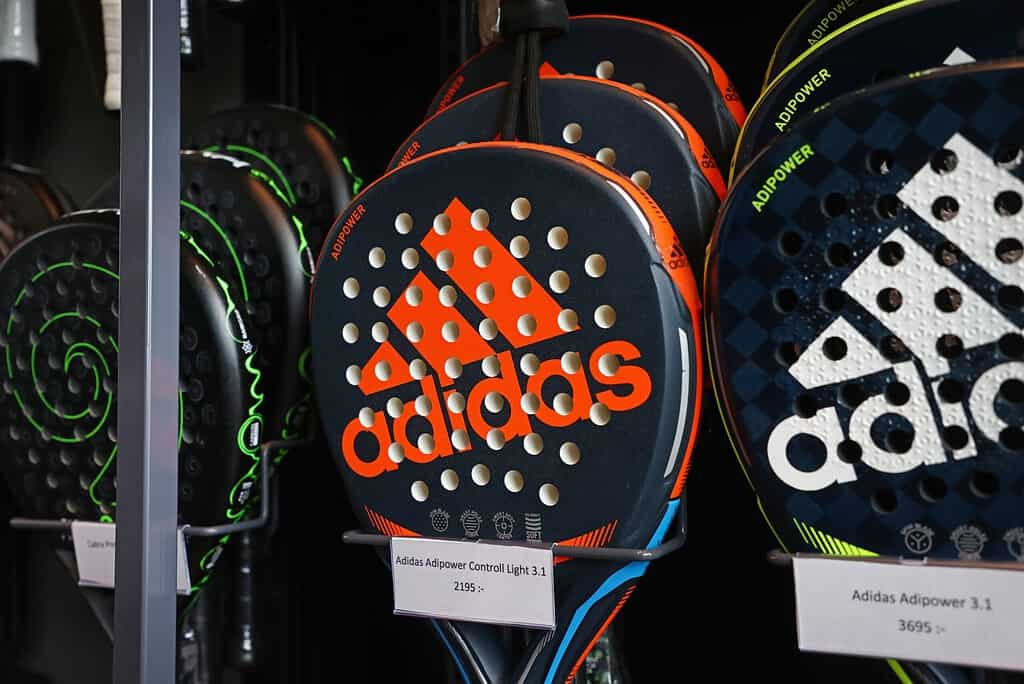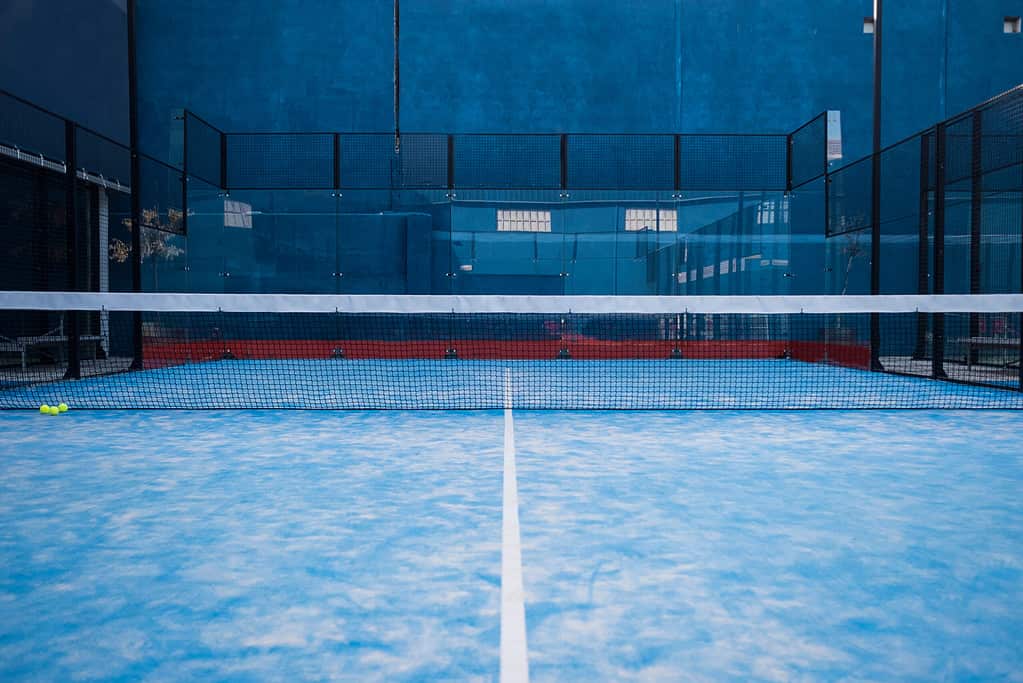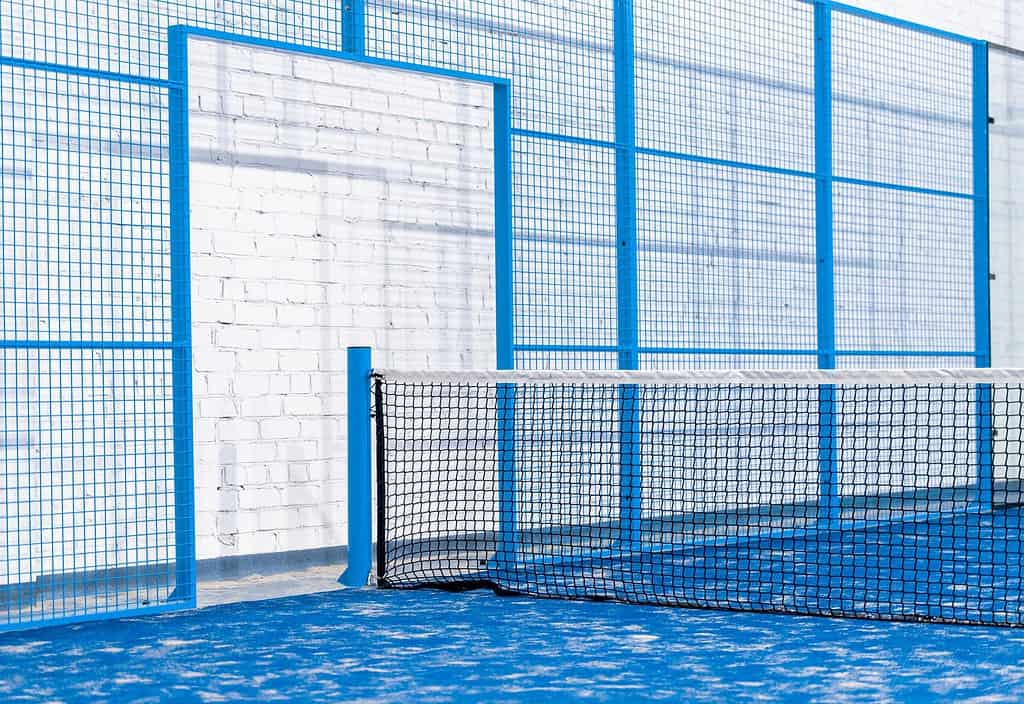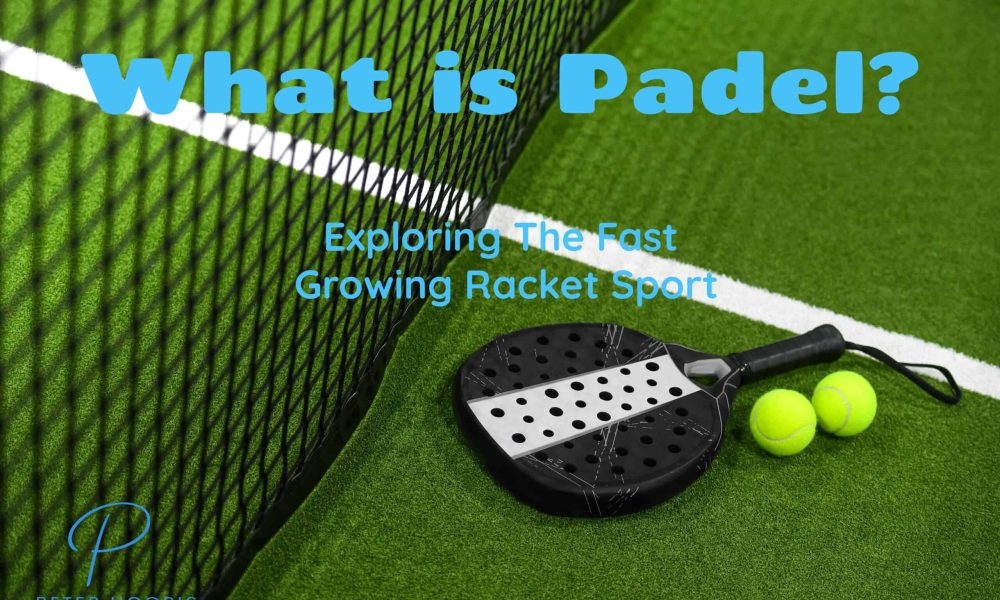Welcome to the exciting world of Padel, a sport that has taken the world by storm and captured the hearts of millions! If you’re new to this fast-paced, thrilling game, you’re in for a treat.
In this blog post, we’ll explore the origins, rules, and unique aspects of Padel, providing you with a comprehensive understanding of this fascinating sport to help you answer the question, “What is Padel?“.
Whether you’re a seasoned athlete looking for a new challenge or a curious sports enthusiast eager to learn something new, padel offers a perfect blend of fun, teamwork, and adrenaline-pumping action.
So, grab your gear, and let’s dive into the electrifying universe of Padel!
What Is Padel?

Padel, sometimes also referred to as Padel tennis, is a racket sport that combines elements of tennis, squash, and racquetball. It is typically played in doubles on an enclosed court with walls, which padel players can use to play the ball. The Padel court is smaller than a conventional tennis court and has a net in the middle.
Padel uses solid, perforated padel rackets and a low-bounce ball. The game’s rules are similar to tennis, with some variations like underhand serves and allowing the ball to bounce off the walls.
Padel is known for being a fun, social, and addictive sport(in a good way!), enjoyed by players of all skill levels.
A Brief History
Padel has its origins in Mexico, where it was invented by Enrique Corcuera in 1969. Corcuera created the first Padel court in his backyard in Acapulco by modifying a conventional tennis court and adding walls around it. The idea was to create a new sport that could be played in a smaller space and be more accessible to a wider range of people.
The sport quickly gained popularity among Corcuera’s friends and family, including his friend Alfonso de Hohenlohe, a Spanish businessman. Hohenlohe introduced Padel to Spain when he built the first padel courts in Marbella in the early 1970s. The sport spread rapidly across the country and soon reached other parts of Europe and Latin America.
The first official Padel championship took place in Spain in 1988, and the International Padel Federation (FIP) was founded in 1991 to govern the sport internationally.
Today, padel is immensely popular in Spain, Argentina, and Mexico, with a growing presence in countries like the United States, the United Kingdom, and various European nations.
Popularity Surge
Padel’s meteoric rise in popularity can be linked to its unique and appealing characteristics that cater to a broad audience. As a sport that is easy to pick up and play, padel entices individuals of all ages and abilities to engage in an enjoyable and fast-paced activity.
The social nature of being played in doubles format fosters camaraderie and teamwork, making it an attractive option for those seeking both leisure and competition. The fusion of tennis, squash, and racquetball elements creates a fresh and thrilling experience that sets it apart from other racket sports.
Furthermore, the compact court size allows for easier integration of outdoor padel courts into urban environments, facilitating the sport’s widespread adoption. Padel’s rapid ascent in popularity is a testament to its ability to captivate diverse groups of people and provide a unique, engaging sporting experience.
If you’re looking to try out Padel, check out Padel USA for more information on where to play and how to get started. Some tennis clubs may offer padel and you may be surprised to find some local padel clubs may too!
Equipment Needed for Padel
If you’re ready to jump into the world of padel, you’ll need the right equipment. Padel tennis is a unique racquet sport that requires specific gear.
Rackets

A padel racket, also known as a paddle or padel bat, is a specialized piece of equipment used in the sport of padel. It is similar to a tennis racket but smaller and more compact.
Padel rackets have a solid frame, perforated face, and a specific design to provide power, control, and spin on the ball. The handles are shorter, and the weight varies based on player preference. Approved rackets must meet regulations set by the International Padel Federation or national governing bodies.
Balls
A Padel ball is essentially like a low-compression tennis ball. Padel balls are similar to tennis balls, but they’re slightly less pressurized, making them slower and lower bouncing. This is perfect for the fast-paced action on an enclosed court.
Padel Court Surface

A standard padel court measures 20 meters by 10 meters and is divided into two equal parts by a net. The surface can be grass, concrete, or synthetic material depending on where you play. As a comparison, a conventional tennis court measures 78ft x 36ft for a doubles size tennis court.
Net and Posts

The net divides the playing field in half, just like in tennis. It should be fully stretched so that its central part is at least 0.88m high, while its ends attached to posts should reach up to 0.92m high.
Proper footwear, such as specialized padel shoes or tennis shoes, and comfortable clothing suitable for athletic activities, will also enhance your gaming experience. Having quality equipment not only improves performance but also ensures safety during gameplay.
Rules of Padel
Padel is a racket sport played in doubles, with the court surrounded by walls and fences. The basic rules are as follows:
- Scoring: Padel uses the same scoring system as tennis – points are counted as 15, 30, 40, and then the game. A set is won by the first team to reach six games with a two-game lead or by winning a tiebreaker at 6-6.
- Serve: The serve must be underhand, with the ball hit below waist level. The server must bounce the ball behind the service line and hit it diagonally into the opponent’s service box. The server gets two attempts to make a valid serve.
- Ball in play: After the serve, players can hit the ball directly over the net or off the walls surrounding the padel court. The ball must bounce on the ground before touching the walls, and it can only bounce once. Players can use any part of the racket to hit the ball.
- Faults: A fault occurs if the ball bounces twice, goes out of bounds, hits the net or the opponent’s body, or doesn’t bounce within the opponent’s service box during a serve.
- Volleys: Players can volley the ball (hit it without letting it bounce) except during the serve, where the ball must bounce in both the server’s and receiver’s side before being returned.
- Change of sides: Teams change sides after every odd-numbered game, and a new set begins with the player who didn’t serve at the end of the previous set.
- Balls: Can be played off walls after the ball bounces on the floor but not directly off the wall without bouncing first on the floor
- Court: Is smaller than traditional tennis courts with glass or solid walls around the perimeter
- Serving: Must be done underhand with the server standing between the sideline and central line
A key aspect that sets Padel apart from other racquet sports is its use of walls surrounding the court. Padel players can utilize these walls similar to how squash players do; bouncing balls off them for strategic shots, making games more unpredictable and fun.
This combination makes padel both physically challenging and accessible even for beginners who are just starting out in racquet sports.
Frequently Asked Questions
What makes Padel unique?
Padel’s unique combination of tennis, squash, and racquetball elements, along with its enclosed court and friendly doubles format, make it a highly accessible and social sport appealing to players of all skill levels. The surrounding glass walls really add to the fun and exciting rallies.
Why hasn’t Padel caught on in the US?
Padel has not caught on in the US primarily due to the dominance of other established racket sports like tennis, squash, and pickleball, as well as limited exposure and accessibility to Padel facilities. However, significant interest is growing.
Why is Padel gaining popularity?
Padel is gaining popularity due to its easy learning curve, social nature, and accessibility, which make it an enjoyable and engaging sport for players of all ages and skill levels.
What Is the World Padel Tour?
The World Padel Tour is the premier professional padel circuit, featuring top international padel players competing in a series of prestigious tournaments held around the globe.
Conclusion
In conclusion, Padel is a captivating and dynamic sport that combines elements of tennis, squash, and racquetball all in an enclosed court surrounded by glass offering an exhilarating experience for players of all skill levels. As we’ve explored the origins, rules, and unique aspects of this fascinating game, it’s clear that Padel’s meteoric rise in popularity is well-deserved.
Whether you’re looking to expand your athletic horizons or seeking a fun, social activity to share with friends, padel is an excellent choice that promises endless excitement and camaraderie.
So, why not grab a padel racquet, gather your friends, and step onto the padel court to discover the thrill and joy of this remarkable sport firsthand? Happy playing!


